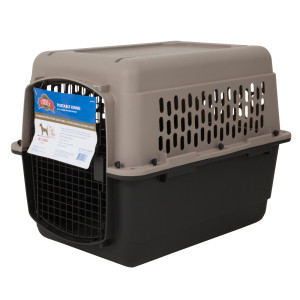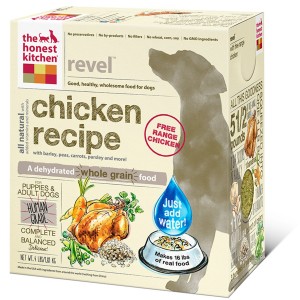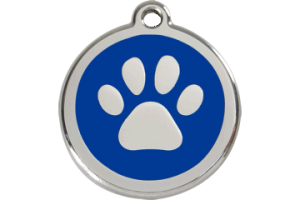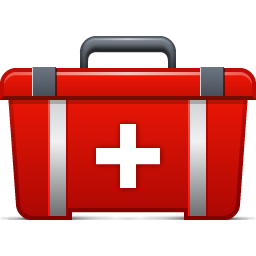(* = items we sell or can order for you)
Remember – if it’s not safe for you to stay in your home, it’s not safe for your pets. When in doubt, bring them with you. There is a chance that if conditions worsen, you may not be allowed to return to your home to retrieve them later.
Pro Tip: Use the buddy system. If you can, make arrangements with a nearby neighbor to try and help each other if the time comes to evacuate. Trade keys now and give instructions on where your pets and medications/supplies are. If you are out during an emergency event, your neighbor may be home and able to get your pets out when you cannot (and vice versa).
each other if the time comes to evacuate. Trade keys now and give instructions on where your pets and medications/supplies are. If you are out during an emergency event, your neighbor may be home and able to get your pets out when you cannot (and vice versa).
 Containment: One of the most important things to own are crates*, (especially for cats). If your house is damaged, your pets might be very frightened and disoriented, and panicking pets are hard to keep safe. Crate them to protect and transport them. You may also have better chances to find shelter elsewhere if you have a means to contain your pet.
Containment: One of the most important things to own are crates*, (especially for cats). If your house is damaged, your pets might be very frightened and disoriented, and panicking pets are hard to keep safe. Crate them to protect and transport them. You may also have better chances to find shelter elsewhere if you have a means to contain your pet.
Drinking Water: Make sure you and your pets are prepared at home with 5 days of water for each of you. Humans should have 1 to 1 1/2 gallons per person, plus more to cook with. A gallon should last a pet about 3 days. Keep an extra gallon to rinse pets that might have become exposed to flood waters or other contaminates. Buy water in sealed containers, or wash and disinfect your own. To prepare other containers appropriate for holding water (such as 2 liter soda bottles, or check New Seasons for 1 gallon and 5 gallon BPA free water bottles. Do not use milk jugs), wash the inside and outside of each container with soap and hot water. Next, sanitize containers with a solution of 1 teaspoon of non-scented household bleach per quart of water. Finally, rinse thoroughly with plain clean water and fill. Store in cool dark place away from chemicals. A water filter used for camping is also a very useful purchase. You can also use the bleach to purify drinking water: 8 drops of bleach for clear water – 16 drops for cloudy per gallon, let sit for 30 min. Iodine tablets can also be purchased to help purify water for drinking.
about 3 days. Keep an extra gallon to rinse pets that might have become exposed to flood waters or other contaminates. Buy water in sealed containers, or wash and disinfect your own. To prepare other containers appropriate for holding water (such as 2 liter soda bottles, or check New Seasons for 1 gallon and 5 gallon BPA free water bottles. Do not use milk jugs), wash the inside and outside of each container with soap and hot water. Next, sanitize containers with a solution of 1 teaspoon of non-scented household bleach per quart of water. Finally, rinse thoroughly with plain clean water and fill. Store in cool dark place away from chemicals. A water filter used for camping is also a very useful purchase. You can also use the bleach to purify drinking water: 8 drops of bleach for clear water – 16 drops for cloudy per gallon, let sit for 30 min. Iodine tablets can also be purchased to help purify water for drinking.
 Pet Food*: Store enough pet food for 5 days. Check expiration dates of foods before you buy. Cans traditionally have the longest expiration dates. Other products for dogs include Honest Kitchen* and Sojo’s* (for both brands, a 10lb bag makes 40lbs of food). These options are much more portable than kibble, and would be suitable for feeding dogs on a raw diet. If you’re storing kibble, make sure the bags remain unopened and in a waterproof container until use. No matter what you choose, make a calendar reminder for yourself to use and replace food that is in storage before it expires.
Pet Food*: Store enough pet food for 5 days. Check expiration dates of foods before you buy. Cans traditionally have the longest expiration dates. Other products for dogs include Honest Kitchen* and Sojo’s* (for both brands, a 10lb bag makes 40lbs of food). These options are much more portable than kibble, and would be suitable for feeding dogs on a raw diet. If you’re storing kibble, make sure the bags remain unopened and in a waterproof container until use. No matter what you choose, make a calendar reminder for yourself to use and replace food that is in storage before it expires.
I.D. Tags: Make sure your contact info is always up to date on your pet’s i.d. tags. If your indoor cats don’t wear a collar, keep a collar* and tag* handy for emergencies. Emergency i.d. tags could also include a number for a friend or relative outside of the immediate area. Take a photo of you with each of your pets and put it with your emergency supplies in case they are lost, and to prove that they are yours once you find them. Consider microchipping your pets.
i.d. tags. If your indoor cats don’t wear a collar, keep a collar* and tag* handy for emergencies. Emergency i.d. tags could also include a number for a friend or relative outside of the immediate area. Take a photo of you with each of your pets and put it with your emergency supplies in case they are lost, and to prove that they are yours once you find them. Consider microchipping your pets.
Medical Records and Photos: You may want to keep medical records with proof of any vaccinations and any critical medications in a waterproof container (again, make a calendar reminder for yourself to use the meds before their expiration and restock them). Write up a list of their dietary, medical and behavioral needs, your veterinarian’s contact info, and friend or family contact info in case they suddenly have to be left in foster care or boarding. Finally, make sure to put a good (hard copy) photo of each of your pets with these records in case the pet is lost and you want to make flyers.
 Assemble a first aid kit:
You can buy one for humans and add a few things for pets, buy a pre-made first aid kit for pets*, or assemble one yourself. Put it in a backpack or tote bag in order to be able to grab it and go. Include phone numbers of your veterinarian and for local emergency clinics (with directions). Here’s a list of first aid kit items compiled by the Humane Society: Gauze, Vet wrap* (self cling bandage), Muzzle* or strips of cloth to prevent biting (important if your dog is in pain, but don’t use this if your pet is vomiting, choking, coughing or otherwise having difficulty breathing), Absorbent gauze pads, Adhesive tape, Antiseptic wipes, lotion, powder or spray*, a foil emergency blanket, Cotton balls or swabs, Gauze rolls, Hydrogen peroxide (to induce vomiting—do this only when directed by a veterinarian or a poison-control expert), ice pack, Non-latex disposable gloves, k-y jelly (to lubricate the thermometer), Rectal thermometer (your pet’s temperature should not rise above 103°F or fall below 100°F), Scissors (with blunt ends), Sterile non-stick gauze pads for bandages, Sterile saline solution (sold at pharmacies), Tweezers, Tick Twister*, Ear cleaning solution*, Benadryl (ask your vet about dosages ahead of time), Neosporin, Nail clippers*, Penlight/flashlight, Styptic powder*, Splints (paint stirrers, rulers, and tongue depressors are all ideas), Extra leash*. A pet first aid book* can be very useful. Talk to your vet about ideas for your pets’ specific medical conditions. Check these items once a year for expired products.
Other useful items: towels, newspapers, plastic garbage bags, poop bags*, kitty litter* and clean litter pan* to take with you if you evacuate, potty pads*.
Assemble a first aid kit:
You can buy one for humans and add a few things for pets, buy a pre-made first aid kit for pets*, or assemble one yourself. Put it in a backpack or tote bag in order to be able to grab it and go. Include phone numbers of your veterinarian and for local emergency clinics (with directions). Here’s a list of first aid kit items compiled by the Humane Society: Gauze, Vet wrap* (self cling bandage), Muzzle* or strips of cloth to prevent biting (important if your dog is in pain, but don’t use this if your pet is vomiting, choking, coughing or otherwise having difficulty breathing), Absorbent gauze pads, Adhesive tape, Antiseptic wipes, lotion, powder or spray*, a foil emergency blanket, Cotton balls or swabs, Gauze rolls, Hydrogen peroxide (to induce vomiting—do this only when directed by a veterinarian or a poison-control expert), ice pack, Non-latex disposable gloves, k-y jelly (to lubricate the thermometer), Rectal thermometer (your pet’s temperature should not rise above 103°F or fall below 100°F), Scissors (with blunt ends), Sterile non-stick gauze pads for bandages, Sterile saline solution (sold at pharmacies), Tweezers, Tick Twister*, Ear cleaning solution*, Benadryl (ask your vet about dosages ahead of time), Neosporin, Nail clippers*, Penlight/flashlight, Styptic powder*, Splints (paint stirrers, rulers, and tongue depressors are all ideas), Extra leash*. A pet first aid book* can be very useful. Talk to your vet about ideas for your pets’ specific medical conditions. Check these items once a year for expired products.
Other useful items: towels, newspapers, plastic garbage bags, poop bags*, kitty litter* and clean litter pan* to take with you if you evacuate, potty pads*.
Keep them Safe: During an event that could damage your house or if your house is already damaged, do not allow your pets to roam loose – keep them leashed or crated.
Never assume that you will be allowed to bring your pet to an emergency shelter. Before a disaster hits, call your local office of emergency management to see if you will be allowed to evacuate with your pets and verify that there will be shelters in your area that take people and their pets.
Covering your bases and being prepared will give you peace of mind!


Thank you for sharing this information in clear detail